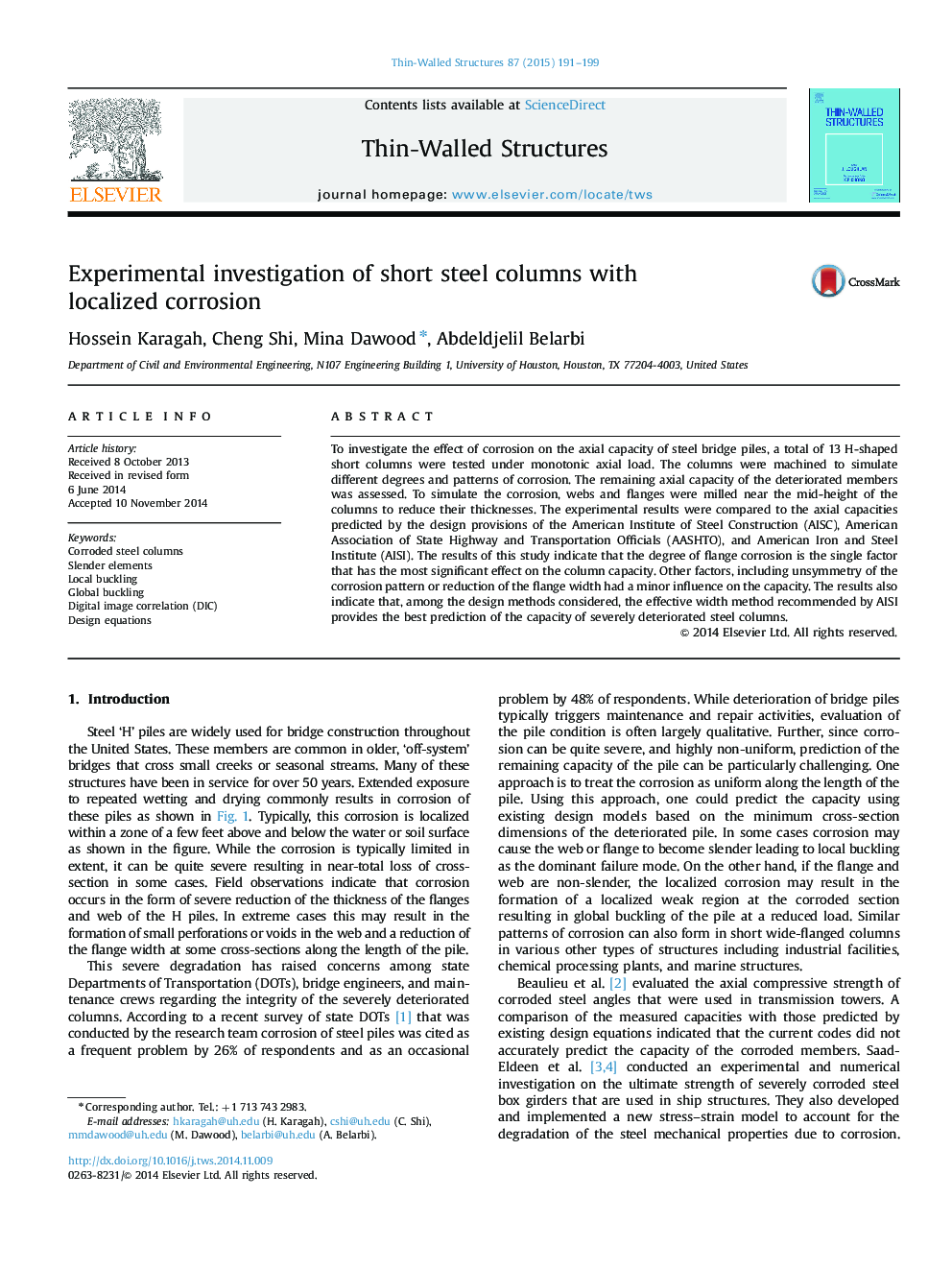| Article ID | Journal | Published Year | Pages | File Type |
|---|---|---|---|---|
| 6779200 | Thin-Walled Structures | 2015 | 9 Pages |
Abstract
To investigate the effect of corrosion on the axial capacity of steel bridge piles, a total of 13 H-shaped short columns were tested under monotonic axial load. The columns were machined to simulate different degrees and patterns of corrosion. The remaining axial capacity of the deteriorated members was assessed. To simulate the corrosion, webs and flanges were milled near the mid-height of the columns to reduce their thicknesses. The experimental results were compared to the axial capacities predicted by the design provisions of the American Institute of Steel Construction (AISC), American Association of State Highway and Transportation Officials (AASHTO), and American Iron and Steel Institute (AISI). The results of this study indicate that the degree of flange corrosion is the single factor that has the most significant effect on the column capacity. Other factors, including unsymmetry of the corrosion pattern or reduction of the flange width had a minor influence on the capacity. The results also indicate that, among the design methods considered, the effective width method recommended by AISI provides the best prediction of the capacity of severely deteriorated steel columns.
Related Topics
Physical Sciences and Engineering
Engineering
Civil and Structural Engineering
Authors
Hossein Karagah, Cheng Shi, Mina Dawood, Abdeldjelil Belarbi,
